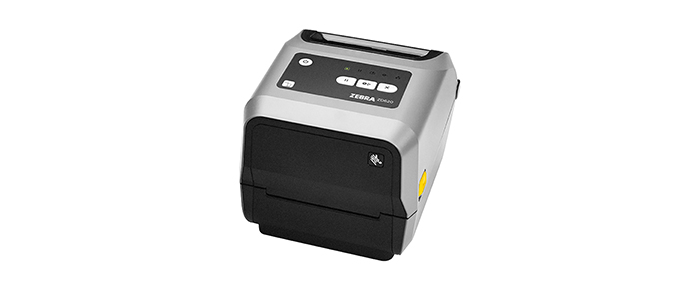 Thermal printers have never been more popular than they are today. They’re used in a variety of industries, from hospitals to the registers that print receipts in retail stores and restaurants. Thermal printers are becoming especially important in biomedical research, as they afford resistance against many of the harsh environments encountered in labs. So, how do these printers work?
Thermal printers have never been more popular than they are today. They’re used in a variety of industries, from hospitals to the registers that print receipts in retail stores and restaurants. Thermal printers are becoming especially important in biomedical research, as they afford resistance against many of the harsh environments encountered in labs. So, how do these printers work?
Thermal versus Digital Printers
Digital printers (inkjet and laser) rely on inks that are applied to the label. While inkjet printers spray ink through a nozzle, laser printers use electrostatic interactions to create an image with toner, apply the toner to the surface of a label, then fuse it to the facestock. In contrast, thermal printers rely on heat to generate the image and provide a printout. However, there are two forms of thermal printers, each with its own distinct method of generating printouts: thermal-transfer and direct thermal.
Thermal-Transfer Printers
Thermal-transfer printing relies on a print head applying heat directly to a ribbon to create a printout on the label. The ribbons can be made of either wax, resin, or a combination of the two, each with varying advantages and disadvantages. Pure resin ribbons offer the greatest resistance against chemical exposure and extreme temperatures, providing a superior quality printout that won’t smudge or fade, even when exposed to harsh solvents, cold storage, or high-temperature and high-pressure sterilization. Wax and wax-resin ribbons provide less resistance against these laboratory environments, making them more suited to print paper and general-use labels used for administrative purposes.
All thermal-transfer ribbons are composed of a ribbon backing coated with the wax, resin, or wax-resin mix. As the labels are printed, the heating pins of the print head heat up and cool down according to patterns dictated by a microprocessor, guided by signals from the labeling software. The heated print head’s pins then heat the ribbon’s wax or resin, which melts and transfers from the ribbon’s backing to the label. The used portion of the ribbon then wraps around the ribbon take-up spindle until the entire ribbon is used up. Often, a ribbon sensor notifies the system when the roll has been entirely used up, protecting the print head from damage. There’s also an end core sensor in the ribbon unwind that senses when the ribbon stops unwinding by detecting the end of the ribbon’s detachment from the core.
Direct-Thermal Printers
Direct thermal also uses heat to generate a printout, but instead of using a ribbon as a source of ink-like material, the entire label is coated in a leuco dye, a chemical that changes color when heat is applied to it. The “thermal head” of the printer generates heat directly onto the label with the help of a “spring,” which applies pressure to the thermal head as the platen roller feeds the labels through.
Advantages to Using Thermal Printers
Generally, thermal printers offer an advantage over digital printers in terms of efficiency. Digital printers print sheet labels, which can pose problems; if you need only a few labels from a full sheet, you can reuse the same sheet later, but with the added risk that it might jam the printer. Digital printers also rely on expensive ink or toner, which leads to waste as many printers won’t allow you to print once the cartridge is only moderately depleted. In some cases, the printer will even block you from printing while the cartridge is still 40% full. Because thermal printers use rolls of labels, you can print only what you need and don’t waste any ribbon. Additionally, each type of thermal printer offers different advantages when it comes to laboratory labeling:
Thermal-transfer printers:
- They are required when labels must resist harsh laboratory environments, such as extreme temperatures, high pressure experienced during sterilization, chemical exposure (xylene, toluene, alcohols, and other solvents), and cryogenic storage in liquid nitrogen.
- Thermal-transfer printouts last much longer than any other method of printing.
Direct thermal printers:
- Ideal for printing general use labels.
- Cheaper and smaller than thermal-transfer printers.
- They can’t be used for sterilization or applications requiring resistance to chemical exposure, as the entire label will turn black if exposed to high heat or harsh solvents.
Conclusion
LabTAG provides a selection of both direct and thermal-transfer printers from recognized suppliers, such as Zebra, Cab, and DYMO. Moreover, we have various printing kits that include a printer, your choice of labels, ribbon, and barcoding software, as well as comprehensive label printing services.
LabTAG by GA International is a leading manufacturer of high-performance specialty labels and a supplier of identification solutions used in research and medical labs as well as healthcare institutions.




